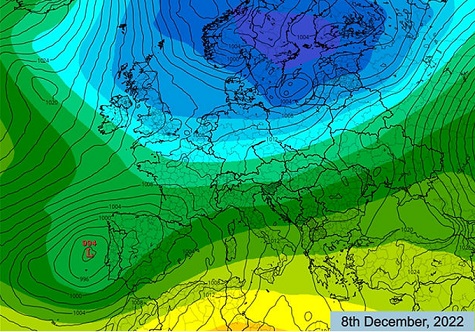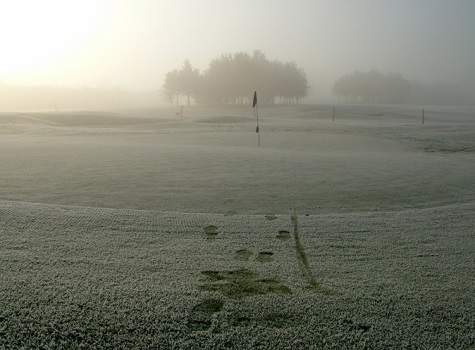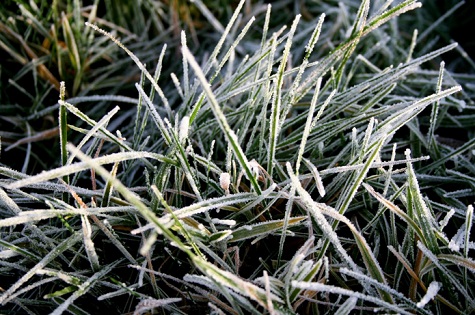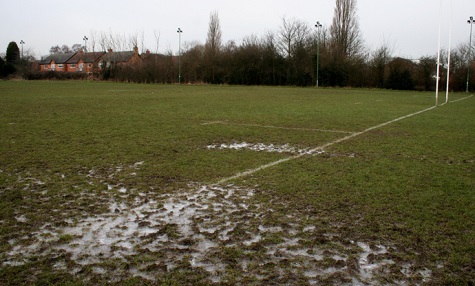This recent spell of cold weather is a stark reminder of what we may be facing in the coming months.
How quickly things can change. We were in still double figures in November and early December, with temperatures between 10-15 degrees. Now, within a few days, we have temperatures down to minus 3 with heavy frosts and a threat of the Beast from the East! This has been confirmed by the great weather website run by Mark Hunt, the retired Headland Amenity manager.
Mark says, "We do indeed have some pretty parky weather on the way, not surprising really when we are only a couple of weeks away from the Winter Solstice and the shortest day.

"Hats off to GFS forecasting because a couple of week’s ago in this blog, I discussed in my outlook a period of easterlies ending in a cold, northerly scenario based on their output - and indeed it has come to pass.
"So yes, winter is on its way and after one of the mildest autumns on record, we took a temperature step down to normality at the end of November.
So we start this week with cold air firmly entrenched across the U.K & Ireland. In addition, we have a low-pressure system sitting off the north-west tip of Scotland. So, I think we will see more snow this week across Scotland from the start of the week. This low pressure will also increase the risk of wintry showers pushing inland along the eastern coastline of the U.K. Some of these showers could reach further inland on today and Tuesday and we will continue our run of overnight frosts and very cold, low single figure, daytime temperatures.

"It's too early to say whether we will have a White Christmas, but many places will have a white December prior to that."
Mark as always gives a great insight into the current weather fronts and from reading his recent report, turf professionals are going to be busy protecting their playing surfaces in the coming weeks.

No doubt there will be some casualties along the way with games called off and some golf courses having to close due to the bad weather, especially if we have a lot of snow.
Frozen turf
Frost on the grass leaf blades tells us that the water inside the leaves is frozen. Remember that 80+% of plant tissue is made up of water, the primary component of plant tissue. When this water is frozen, foot traffic on the turf causes the ice crystals in the cells to puncture through the plant's cell walls, thus killing plant tissue.

When they are frozen the leaves of the turf get easily bruised by player's feet. After thawing, the affected turf turns black or brown and becomes sparse. The turf can often remain thin for long periods if damage occurs early in the winter. The fine turf on greens becomes more susceptible to disease and the putting surface becomes very uneven.
More long-term damage can be caused when play takes place as the turf is thawing after a prolonged freeze. Under these conditions the top surface of the turf may be soft, but the underlying soil can still be frozen. Root damage occurs easily from a shearing action as player's feet move the soft top surface against the frozen sub soil.
The process of damage to the turf normally occurs in the following pattern:
- Bruising and damage to the leaf.
- Loss of turf colour.
- Severing of grass roots.
- Compaction of the soil.
- Thinning of the swards.
Each time you continue to allow play on frosty greens you continue to promote further turf decline. Low soil and air temperatures prevent turfgrass recovery.
However, many golf clubs do operate a favourable frost policy, whereby several contingencies are put in place to reduce frost damage on the course to allow golf to be played during frosty conditions, some of the methods used by clubs include:
- Many clubs are now using artificial winter tee mats, which are brought out for the winter period.
- Temporary green areas have been mown out and introduced for winter play.
- The course is inspected every morning by the greenkeeping staff who then make a judgement on whether the greens / or which greens are playable depending on the severity of the frost.
Often if the frost is a hoar frost, it is likely that many of the greens will be playable by late morning once thawed. In most cases frost damage will not be noticeable until the spring when long term damage has already occurred. A poor thin sward, a heavy compacted green and a poor putting surface are all consequences of play being allowed on frosty courses.
The best policy is for a club to inform club members / players of the reasons why greens and courses must be closed during heavy frosts. Explaining these facts to the members and players will help them understand the longer-term benefits of maintaining the sward quality of their greens.

As for winter sports pitches they are again prone to surface damage during very wet periods and postponements are likely if you have a very heavy frost. It would seem from the recent weather reports, this year we may be facing a more challenging winter period, so I suggest we get prepared for the worst.
And maybe like Mark says, we may indeed have a white Christmas.